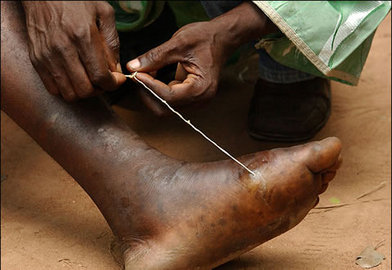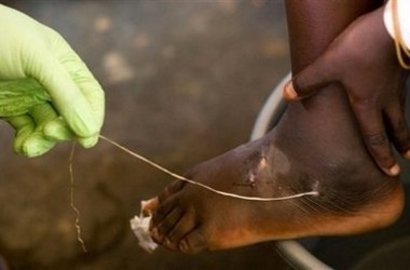Introduction

Guinea worm Disease causes physical pain for people, economic pain for countries. It is also known as “the fiery serpent. But the more formal term for this is “Dracunculiasis” It is a parasitic infection that has devastated the Asian and African people from ages. Guinea worm Disease attacks the poor people, who do not have access to hospitals and especially to clean drinking water. This disease is caught by drinking impure water that is sheltering larvae-infected bugs. These larvae after being swallowed reproduce in the intestine. The larvae turn into worms, journey through the tissue and try to make it to the skin. It takes around a year to look like a 2-3 feet spaghetti noodle. People harboring the worm in their bodies can see it move as it starts breaking the skin. As the worm finally finds its way out, it causes an unbearable burning feeling. The only way of getting rid of this pain is to dip the broken skin in the native water source. Unfortunately this causes the worm to continue its life cycle. This worm reproduces and leaves a huge number of larvae in water, which are consumed by water fleas, who transmit the disease to other people.
History

Ebers Papyrus, an ancient Egyptian compilation of medical texts, provides us with some evidence of Guinea worm Disease. This compilation is dated back to around 1550 BC. Ebers Papyrus tell how the worm can be taken out of the body. It is thought that the fiery serpents from the shores of the Red Sea, that rained upon the Israelites in the 12th century BC were in reality guinea worms. The Old Testament also describes this.
Features

It takes about a year to know that one has Guinea worm disease. First symptoms include fever, nausea and extreme weakness. After few weeks, this worm creates a big scorching skin ulcer which causes intense pain and swelling. The part where the ulcer appears is barely moveable. A blister forms in the center of the ulcer and then opens into a wound, the worm comes out from there. After the worm comes out, fever is developed with swelling and severe pain. It takes about ten days to one month for all these symptoms to appear. It’s agonizing. A person cannot walk if it is on the foot or the leg. There can be more than one worm present in the body. One way of dealing with the worm is to bin it on a stick and try to pull it out. However, if it tries to fight and go back inside, it can solidify and block the blood supply. This can also cause paralysis. The worm tries to come out if the wound is dipped in water. More than 90% of the worms are encountered on the bottom half of the body. When the worm has exited, the wound get infected and agonizingly swollen.
Tips and comments
It is thought that guinea worm disease will be eliminated by the end of 2005. The organizations responsible for this eradication mission to be achieved are UNICEF, the World Health Organization (WHO), and the Carter Center (founded by President Jimmy Carter) and other partners. The most effective method is teaching people to filter water. The pipe filter, which looks and acts like a straw, is portable and easy to use. The filter comprises of a straw with sieve at one end that strain out the infectious larvae from the water.